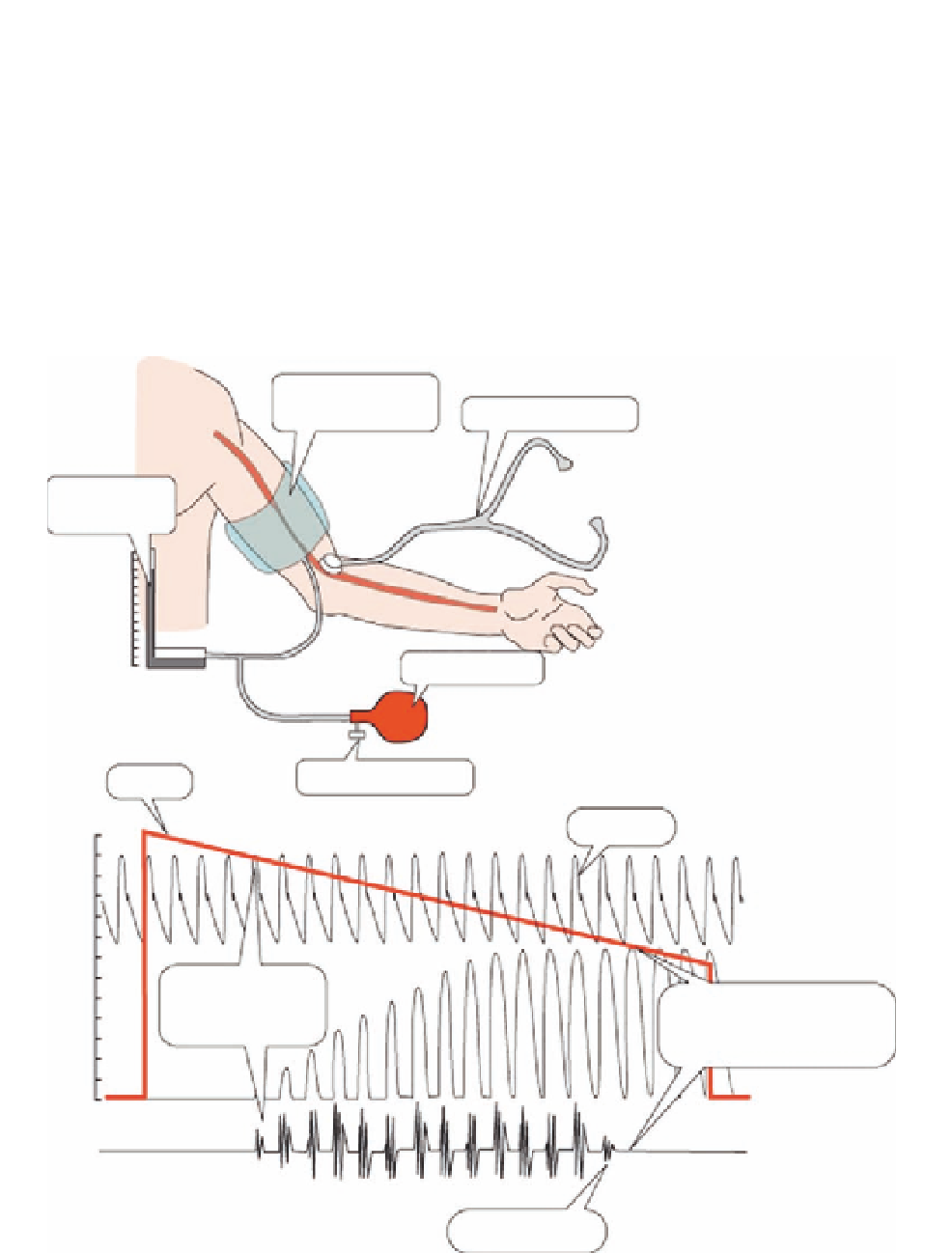Biomedical Engineering Reference
In-Depth Information
As the cuff pressure continues to fall, the duration that the brachial artery pressure exceeds
the cuff pressure will increase. As such, the (small) opening will increase in size and duration,
until finally the vessel remains open as the cuff pressure falls below diastolic pressure in the
artery. At that point, the turbulent sounds, called Korotkoff sounds, fade away.
A manometer is connected to the pressure cuff so the physician can see what the pressures
are when the sound begins (systolic pressure) and when the sound finally fades away (diastolic
pressure). Thus, the sphygmomanometer can be used as a noninvasive means of determining
the two extremes of blood pressure, normally at 120/80 mm Hg. The relationships between
cuff pressure, vessel pressure, and sounds via the stethoscope are shown in Figure 14.40.
The measurement of blood pressure depends greatly on the location of the measurement.
As shown in Figure 14.34, the blood pressure falls as blood circulates through the systemic
Pressure cuff wraps around
upper arm; inflation
occludes brachial artery
Stethoscope allows ausculation
of Korotkoff sounds
Hg manometer
measures the
pressure on the cuff
120
100
80
60
40
20
0
Rubber bulb inflates
the pressure cuff
Release valve on bulb allows
for slow release of cuff pressure
Cuff pressure
Arterial pressure
120
100
80
60
First Korotkoff sounds
correspond to the point
where cuff pressure is just
lower than systolic pressure
Disappearance of Korotkoff sound
corresponds to the point where
cuff pressure is just lower than
diastolic pressure
40
20
Arterial flow
0
Korotkoff sounds
Muffling of Korotkoff
sound
FIGURE 14.40
The sphygmomanometer and the generation of Korotkoff sounds indicating systolic and
diastolic arterial pressure.

